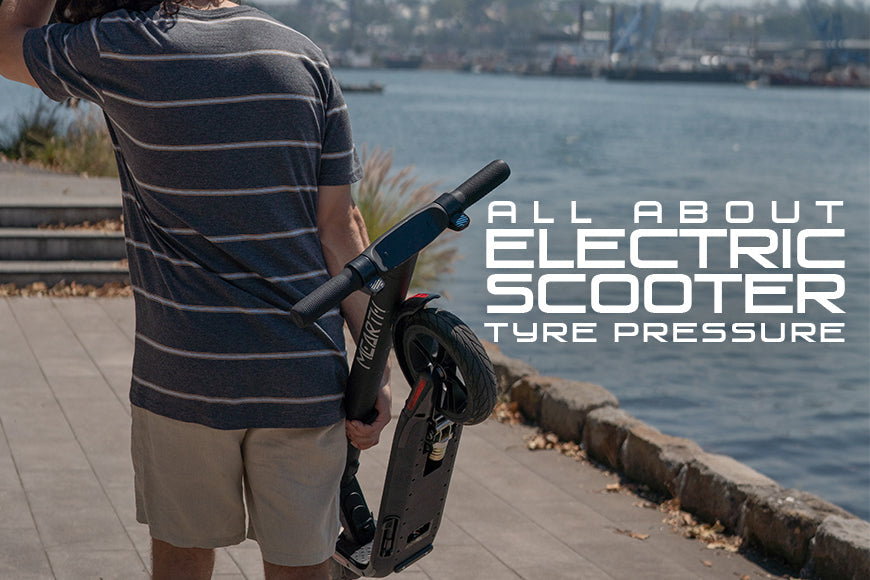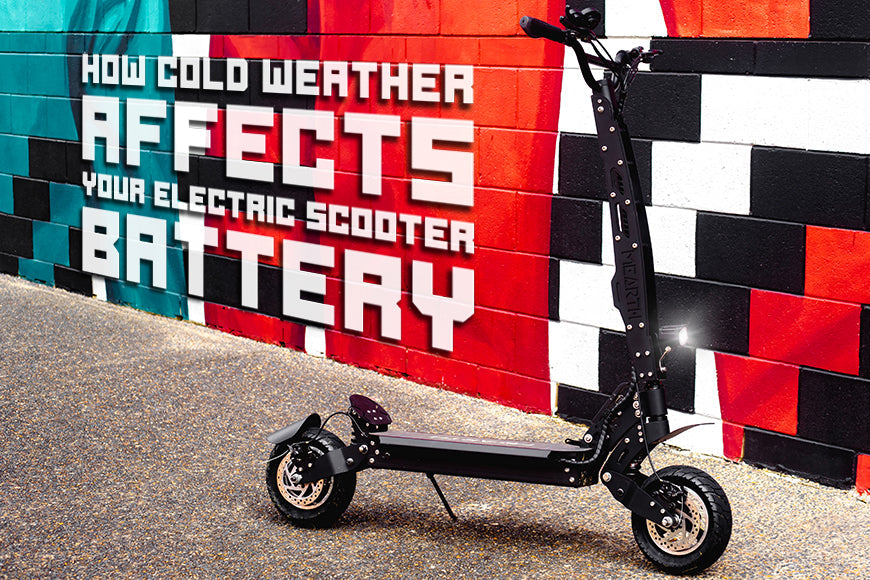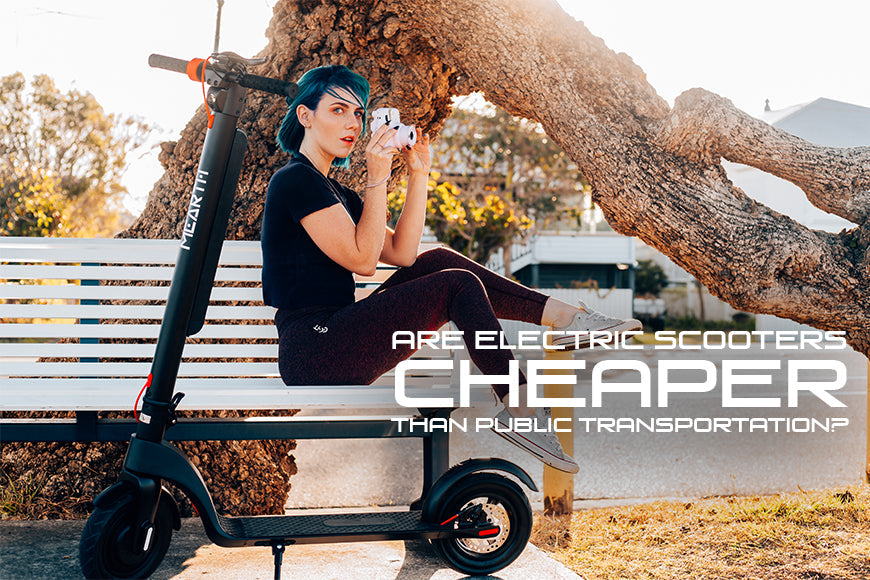
When it comes to basic electric scooter maintenance, one thing that some e-scooter owners forget is the tyre pressure. For those who use pneumatic or air-filled tyres, this is an important factor to consider when maintaining your electric scooter. Tyre pressure measures how much air is inside a tyre. Whether you are a first-time or long-time e-scooter owner, this quick electric scooter guide will tell you all that you need to know about electric scooter tyre pressure.
Why is tyre pressure important?
Getting your tyre pressure correct can make a difference in your overall ride quality. Higher or lower tyre pressure can affect how much of the tyre’s material interacts with the surface. This affects your range, comfort, handling, and braking. This means getting the tyre pressure wrong can result in safety and riding issues. Moreover, maintaining good tyre pressure will help prolong the lifespan of your e-scooter tyre. Overall, the right tyre pressure will help you get the most out of your electric scooter.
How to check electric scooter tyre pressure
If you are not sure if you are using pneumatic tyres, one way to find out is to check if it has an inflation valve stem protruding from the wheel rim. Otherwise, you can touch the tyres and squeeze them. Solid tyres are completely hard and solid, so you won’t be able to squeeze them. Note that a few electric scooter models use both kinds of tyres for their wheels, so check them both to be sure.
If you ride your electric scooter almost every day, it’s best practice to check the tyres before riding. It will not only help you know your current tyre pressure but also check if there’s any puncture to your tyres or damage to your wheels. Moreover, make it a point to check your accurate tyre pressure weekly to maintain your correct tyre pressure.
To check your tyre pressure, you can do it in two ways:
This is an old-school way to estimate your tyre pressure. It’s easy and quick, so it’s great to do if you are in a hurry. However, it will only help you know if your tyre is flat or not. It can’t give you an accurate idea if your tyre pressure is still within the recommended tyre pressure.
A tyre pressure gauge offers an accurate and reliable measurement of your tyre pressure. The gauge measures in PSI (pounds per square inch), which is the common unit of pressure. If you want to maintain a certain tyre pressure or modify your tyre pressure, using a tyre pressure gauge will ensure that you have an accurate amount of pressure in your tyres. Take note that using a tyre pressure gauge will slightly deflate your tyre.
Recommended tyre pressure
In general, the recommended tyre pressure for electric scooters is within 40 to 50 PSI. Manufacturers often provide a recommended tyre pressure, so you can check your user manual for your tyres' optimum tyre pressure. If the recommended tyre pressure is not in the manual, you can check the tyres. It’s usually embossed on the side of the tyre along with the tyre’s max load.
However, the value indicated on the side of the tyre is usually the maximum recommended tyre pressure for your tyres. So, it’s best to follow what’s written in the manual for a more accurate value.
Modifying tyre pressure
Although there are recommended tyre pressures for each manufacturer, the ideal tyre pressure also depends on the rider’s weight. Ideally, riders weighing 70 to 90 kg (155 to 200 lbs) should use the recommended tyre pressure. Meanwhile, heavier riders should use a higher pressure than recommended, and lighter riders should use lower pressure than recommended. However, only add or subtract about 3 to 5 PSI if you are increasing or decreasing your tyre pressure. Too much or too little will not be good for your tyres.
Aside from weight, you may consider modifying your tyre pressure because of the weather. Tyre pressure increases due to friction. So, during hot days, it’s recommended to reduce your tyre pressure by 2 to 3 PSI.
Keep in mind that you will need to do a bit of trial and error to get your ideal tyre pressure. Try different values for your tyre pressure and see which offers the best riding experience for you.
How does tyre pressure affect your ride quality?
With a higher tyre pressure, you will experience:
- Better maneuvering
- Higher speeds
- Less rattling
- Better suspension
- Less flat tyres
- Better range
- Smoother riding experience
With a lower tyre pressure, you will experience:
- Better grip or traction
- Better grip on slippery or wet terrain
- Better grip for climbing hills
In general, a higher tyre pressure offers a better riding condition. However, you are free to modify your tyre pressure according to your needs. As long as you use the right tools, adjust the pressure correctly, and avoid going over or under the recommended tyre pressure, then you will get the right tyre pressure that will get the most out of your electric scooter.
For more electric scooter guides and tips, check out Mearth’s blog.




Leave a comment
This site is protected by hCaptcha and the hCaptcha Privacy Policy and Terms of Service apply.